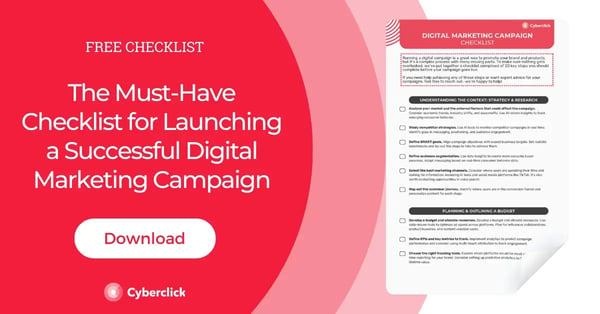One of the biggest challenges of digital analytics and attribution marketing is correctly attributing sales. Omni channel is no longer just a buzzword, but an unavoidable reality: users maintain complex relationships with brands through multiple channels, deeming the "last click" attribution models overly simple.
Google attribution is changing things up. Today I want to tell you what it is, what it can bring to your company and the most effective tactics to start up your new attribution strategy.

What is Google attribution and how can it help your company?
Google Attribution is the new tool that allows us to measure the impact of each point of contact through multiple channels and devices, so that we can better orient our decisions in digital marketing. This tool will be free for all advertisers and will have multiple benefits:
- See the end to end customer journey. With Google attribution you can finally understand the impact of your marketing on different devices and through multiple channels. If you follow a multi-channel strategy, it may be very difficult for you to determine which conversions are attributable to each one. In addition, since each user uses different devices, such as computers, tablets and mobiles, it is very common to lose track of them. Google Attribution solves these problems to give an integral view of the consumer's journey.
- Measures the impact of each point of contact. If you are not sure what channels are generating results, it can be difficult to decide where to invest. That is why it is very important to be able to clearly view the consumer's journey. Thanks to its automatic learning algorithms, Google attribution can determine what results are due to which channels, from the first consumer contact to the final conversion. It also allows to compare the user journeys that convert and those that don’t, so that you can easily identify the weak points.
- Facilitates decision-making. If you have better metrics, you will find it easier to optimize your marketing. And since data is only useful if when applied, Google attribution is integrated with other tools like AdWords and DoubleClick, so you can update your bids or distribute the budget between channels according to the results. This integration also extends to third-party tools.
- Accelerates access to results. Another key promise of attribution is that it allows you to access your metrics and analytics with just a few clicks. In order to be able to carry out a correct attribution, you need your data to be unified and well organized. But the configuration can be a real headache and give rise to many errors. As Google attribution is integrated with other tools, it is much easier to import your data neatly and quickly access the metrics that matter most to you.
A success story: Lenovo
We're going to see all of this in practice with a little case study with Lenovo.
Lenovo is the world's first computer manufacturing company and a market leader in personal technology, with presence in more than 160 countries.
With a wide presence in digital marketing, Lenovo faced the classic attribution marketing challenges. For example, a rules-based measurement system made it possible to attribute the same sale to multiple channels. Each channel reported its results separately, but when trying to get a global view, the accounts did not fit. In fact, the metrics were inflated to the point where the attributed results were 371% of the actual sales.
Another problem was the attribution of users. Since Lenovo sells multiple products (computers, tablets and mobiles), it was essential to know the purchasing profile of each user.
Lenovo used Google Attribution 360 to learn about the overall results of its marketing program, optimize channel spending, and distribute the budget optimally to increase sales. Thanks to this tool, they were able to reach key conclusions for their business:
- Direct and organic search were the strongest channels, thanks to Lenovo's brand notoriety.
- Multichannel is important: 75% of revenue came from journeys that included several channels.
- Consumers make a special search engine, so it was interesting for the brand to continue investing in this channel.
- The channels that close are not the only ones that matter. By having a more holistic view of the consumer's journey, Lenovo was able to recognize the importance of the initial and intermediate steps in conversion.
- The brand display works: up to 5% of the profits could be attributed to this channel, which until then had been overlooked.
10 tactics to optimize your attribution marketing
- Define the results you are looking for. To get the most out of your marketing, the first step is to be clear what you want. So sit down with your team and define what you want to get from your campaign and how you're going to measure the results.
- Unify your metrics. Each channel uses different indicators, but if you want to have a global vision of what happens, you need align different channels to have results that can be compared.
- Establish a clear methodology. To work as a team, you need to all row in the same direction. That is why it is necessary for the whole team to agree on the steps to follow at any time.
- Be clear about what is feasible. However refined your tools are, you cannot know absolutely everything. It's better to focus on a handful of really relevant metrics than trying to cover everything.
- Involve the IT team. Your computer team is key to the success of your attribution marketing, so you should collaborate from minute one. They can help you decide how to get and store the data and solve the technical problems you'll find along the way.
- Be prepared for changes and contingencies. As you develop your attribution marketing, you will have to experiment with new tools, change the site labels or even start from scratch again. Do not let the changes catch you off guard.
- Coordinate those responsible for each channel. It is not a competition to see who gets more conversions, but a teamwork to improve the benefits for all. Therefore, it is necessary that the people in charge of each channel work in synchrony.
- Decide actions and responsibilities. As mentioned, the results only serve if they give rise to actions. So get out of each meeting with a clear plan of what are the next steps to follow and who will take care of them.
- Establishes clear standards for data management from the outset. Data governance policies are in charge of formalizing where data is stored, how they are integrated, in which cases changes will be made, and how these changes will be communicated. It's a very good idea to have all these points defined from the beginning.
- Organize regular meetings and reports. A good follow-up is essential to guarantee results over time. Create a process for each team member to report regularly on the results achieved and the actions carried out, as well as to create global results reports and determine the following steps.
Inbound Marketing & Content Strategist en Cyberclick. Experta en marketing online, gestión de contenidos, estrategia en redes sociales, y creación y optimización de campañas en social ads.
Inbound Marketing & Content Strategist at Cyberclick. Expert in online marketing, content management, social media strategy, and creation and optimization of campaigns in social ads.


-1.jpg)


Leave your comment and join the conversation